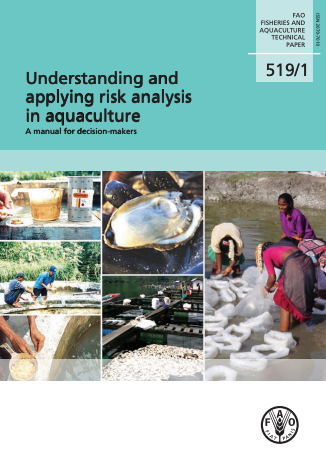Understanding and applying risk analysis in aquaculture

As a food-producing sector, aquaculture has surpassed both capture fisheries and the terrestrial farmed meat production systems in terms of average annual growth rate. However, it has a number of biosecurity concerns that pose risks and hazards to both its development and management, and to the aquatic environment and society. Aquaculture faces risks similar to those of the agriculture sector. However, as aquaculture is very diverse (in terms of species, environments, systems and practices), the range of hazards and the perceived risks are complex. Multiple objectives are driving the application of risk analysis to aquaculture. Foremost is for resource protection (human, animal and plant health; aquaculture; wild fisheries and the general environment) as embodied in international agreements and responsibilities. The other drivers of risk analysis are: (i) food security, (ii) trade, (iii) consumer preference for high quality and safe products, (iv) production profitability and (v) other investment and development objectives.